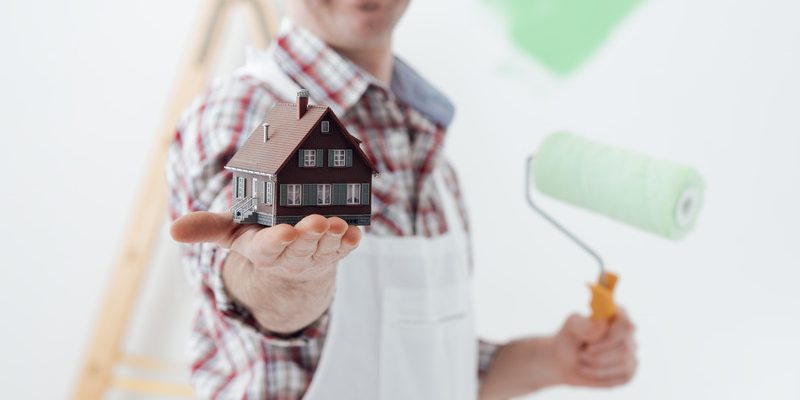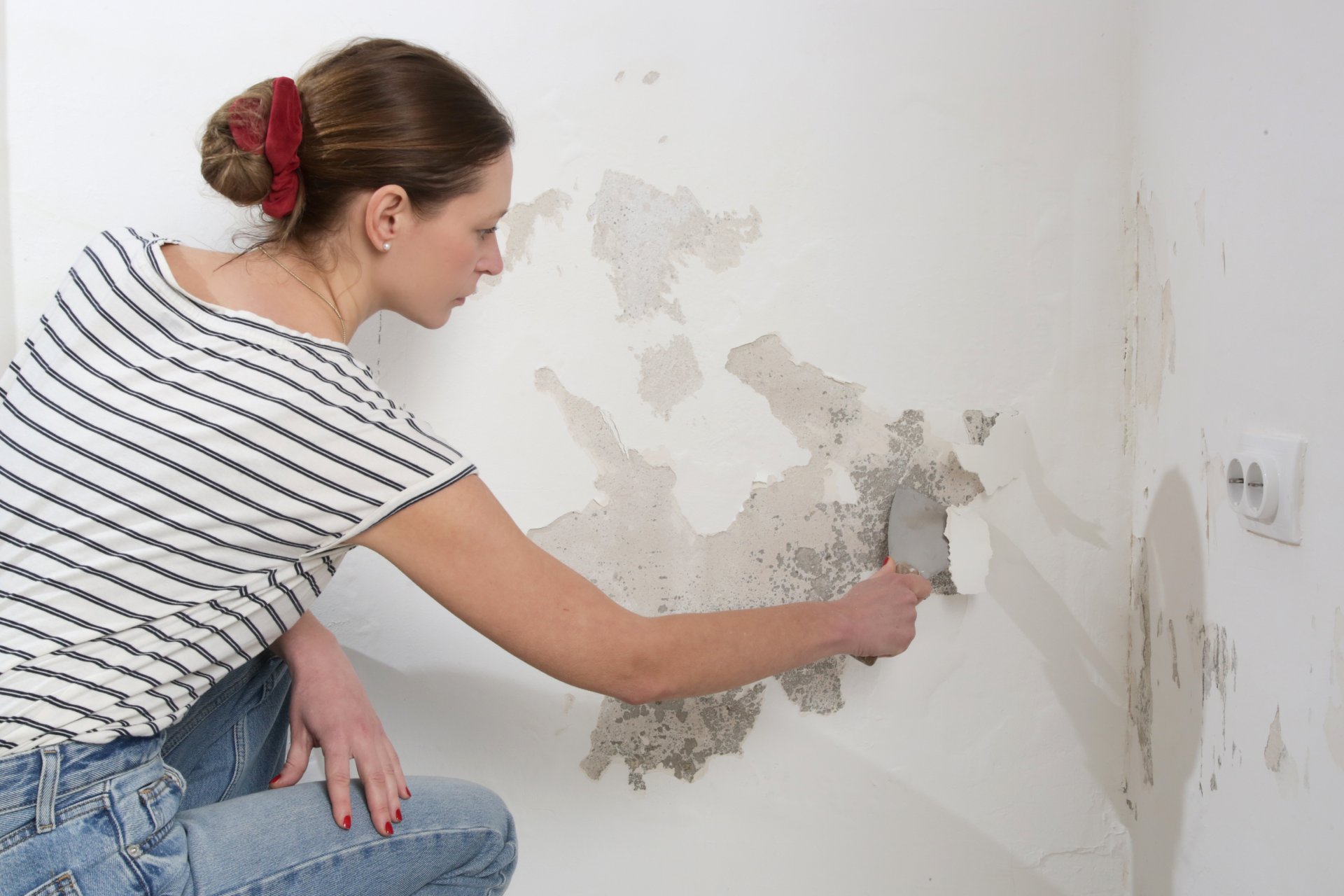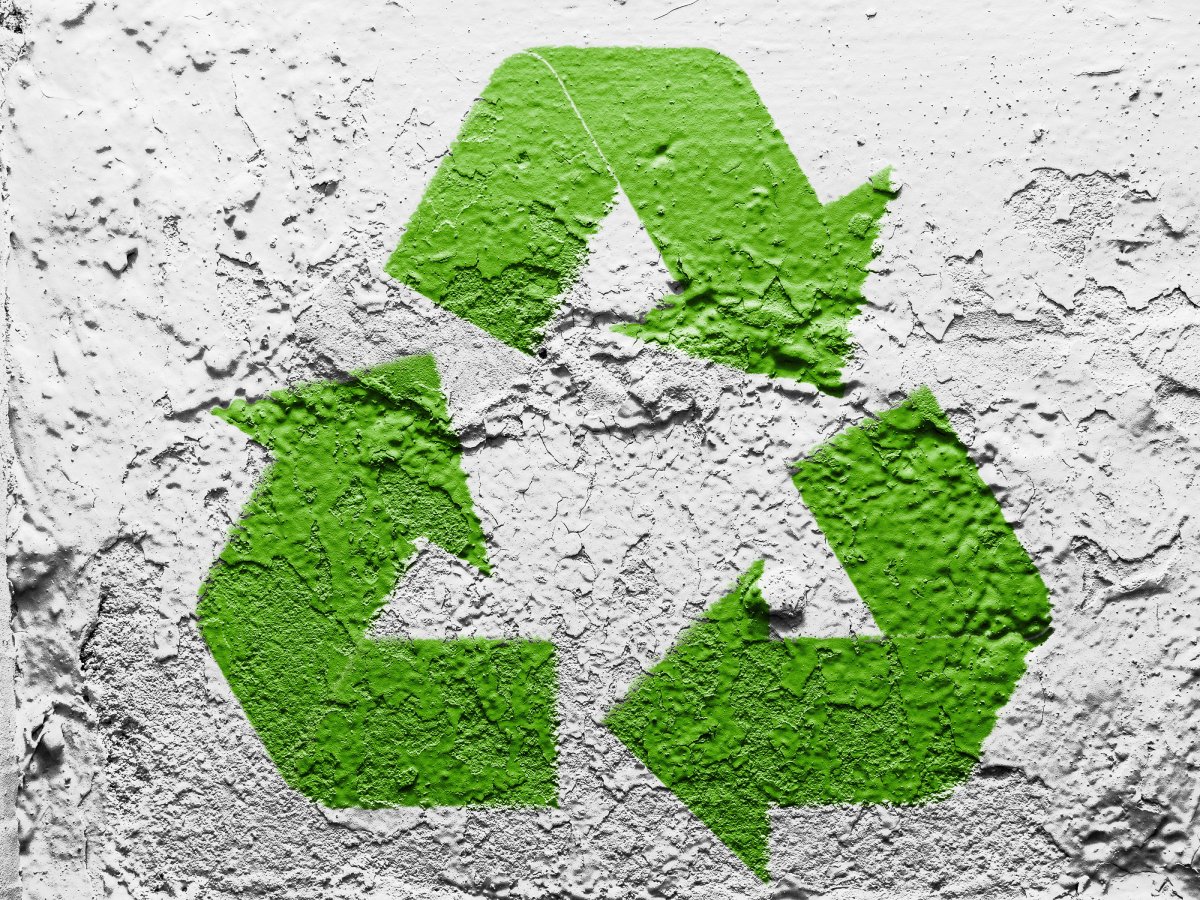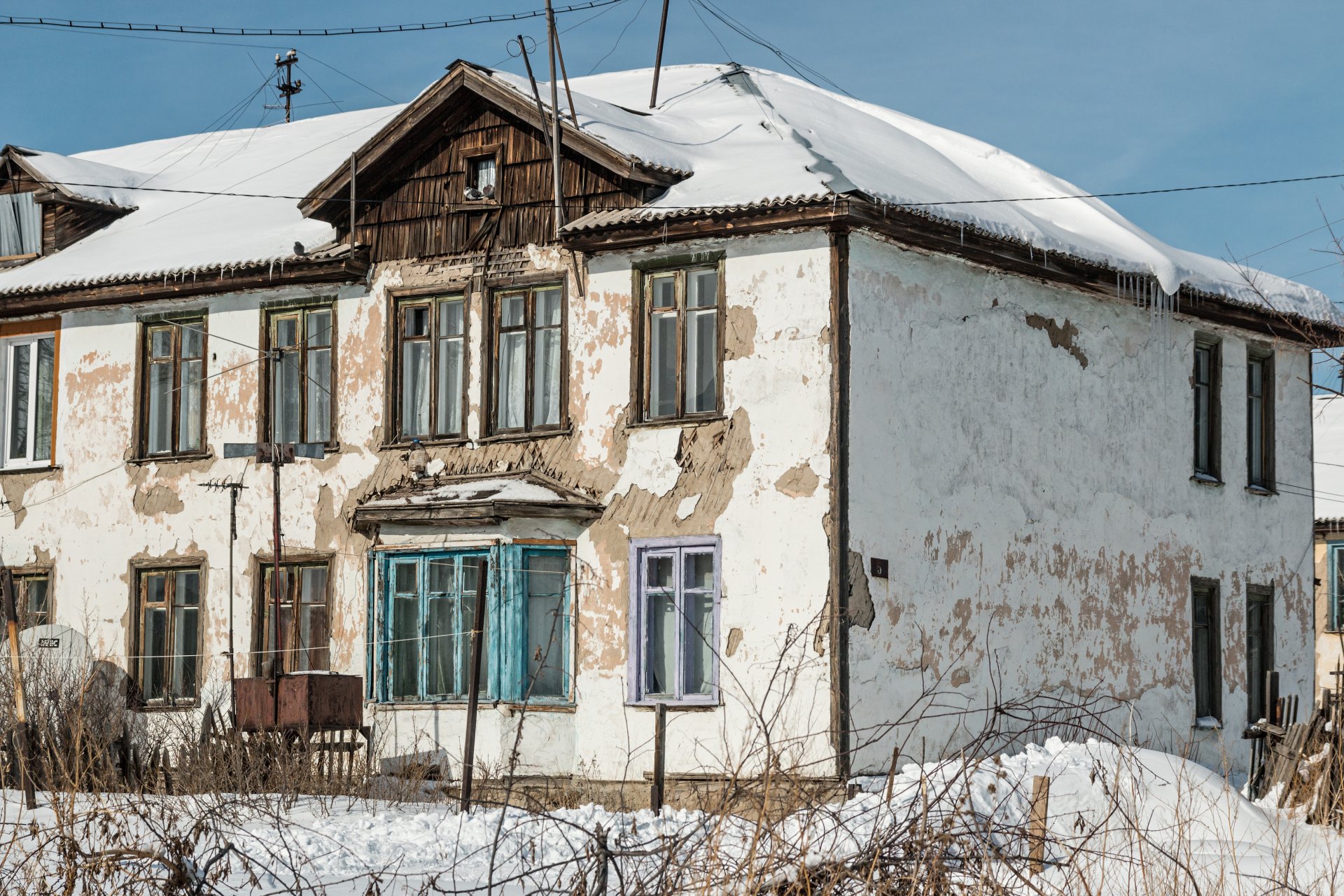Painting your house yourself is not just another DIY project. Let us help you make the best decisions on how and when, with some crucial information and a proper plan
Have you been noticing things around your house’s exterior, such as faded or chipping paint? Maybe some of your paint is peeling away? These can be signs that it is time for a new paint job, and now you have quite a few decisions to make.
What is your budget? What brand of paint will you choose? Which colors do you want, and how much of all of this do you need? These are all questions you are going to have to ask yourself if you’re going to do it yourself rather than hiring exterior painting services.
We have a lot of valuable information that will be of use to you when you’re getting ready to jump into this daunting task.
Read on to learn everything from helpful tips on exterior painting, the average cost of painting your house, and a few other frequently asked questions about the subject.
Painting Your House’s Exterior Yourself: A Few Handy Tips
We all know the feeling of looking down the barrel of a big painting project. Luckily, there are several steps you can take to make sure your paint project goes along smoothly and without too much stress on your end.
Here are some things to keep in mind before you paint the outside of your house:
- Think about the weather: Mother Nature won’t always share your plans, and when it comes to a project like repainting a house’s exterior, timing is crucial. Choose a dry time of year, one where it doesn’t rain is not too humid.
- Consider the quality of the price: Your paint job is only as good as the quality of the paint you buy. You might be tempted to try and shave off a few bucks on your paint budget by buying cheaper brands, but that will surely end up costing you more in the long run.
- Sand down and wash before painting: Before you start painting, consider going around the house and do some sanding and washing. Paint won’t stick to dirty surfaces or ones that are really rough, so cleaning your siding and trim and then sanding it is important.
- Make sure you use primer: you can apply a coat of primer, sand, and then apply the actual paint. However, today you can also find paint and primer in one package. This new paint and primer combo is a bit on the pricier side, but not much when compared to the price of buying paint and primer separately.
- Always paint from top to bottom: When you paint, make sure you start painting from the top and work your way down. You have more control over streaks since you’re not working against gravity with this method.
How Much Does it Cost to Get the Outside of Your House Painted?
The overall cost depends on several different things. It is important to think about how much paint you are going to need, other equipment, what brand paint you are going to buy, the square footage you are painting, and more.
Expect to spend anywhere between 60 cents to $1.60 per square foot. For a 2400 square foot house, the overall cost could be anywhere between $1800 to $3200.
You’ll need to consider the equipment you need. Make sure you itemize what you plan to purchase, as this can help you when setting your budget for your paint job.
Do You Need Permission to Paint Your House?
As you might suspect, the answer is: it depends.
If you are the owner of the house and live in a rural area, there is really not much that can stop you from painting should you so desire.
If you live in a suburban area, however, things may be a little different. You will need to check to see if there are any planning permissions for your area, and also be sure to check if there are city codes you should know about.
Some neighborhood groups like to make sure houses are all painted in a similar fashion for aesthetic reasons. Others that live in historic districts may need to meet specific guidelines.
How Do You Paint the Exterior of Your House?
These steps are integral to making sure the painting process goes well and lasts for a long time.
- Pressure wash the walls: If you want to maximize the coverage your paint is going to get, you’re going to want to wash any dirt and other materials on your house’s walls. You can use a pressure washer to achieve this task quickly and efficiently.
- Fix damaged surfaces: Once you’ve done a good pressure wash, walk around it and see if you can notice any damages. If you do, you can apply epoxy filler into cracks or holes with a spackle knife. Once the filler is dry, you can go ahead and sand it down.
- Take out loose paint: If you notice any loose or chipped paint in your walk around of the house, take note of it. You can then come back and remove it with a paint scraper or a sanding block.
- Caulk your home’s trim: You can fill any gaps in the trim with a caulking gun.
- Use primer: With any area you’re planning to paint, you can go ahead and apply primer to the surface using a paintbrush. Or, as mentioned before, you can use a primer & paint combo.
- Make sure your doors, windows, and your lights are safe: Before painting, you can cover your doors and windows, as well as your lights, with sheeting and painter’s tape.
- Paint! And now, the moment we’ve all been waiting for. Work from top to bottom to avoid complications.
Those are the basics of what to do when you are painting your house. Following these steps can help you paint like a pro.
How Often Should You Paint Your House's Exterior?
The answer is really that it depends. Someone with a brick house will not have to repaint for 15 to 20 years, while people who live in wood houses may have to repaint every three to five years.
Your climate is also a big influence on how often you should paint. Tropical climates can wear and tear on paint, for example. Do all the research necessary on the type of material your house is made from and how long paint jobs typically last for those materials, as well as some of the things that can wear them down.
Frequently Asked Questions
What is the cost to paint a room?
Painting a room will start at the cost of about $200. For painting the room yourself, the cost of painting materials goes for about $60. Painting an average 10 x 12 room by a professional typically cost between $300 and $400. Painting the same 10 x 12 room yourself would cost you about $125 for painting materials.
How do you prevent lap marks when you are painting?
The appearance of deeper color or increased gloss in a place where wet and dry layers overlap the painting is known as lap marks. The best way to avoid lap marks is to maintain a wet edge. During painting, you must move swiftly enough so that the paint you are applying can easily adhere to the previously-applied paint.
Can I just apply paint over old paint?
The best is to prime. You can just apply a quality primer or primer and sealer together with a coat of good paint on the old paint if you planned to use 2 coats of paints to cover the old paint. Although there will be a different approach to it, the primer adheres to old paint very well than new paint. Apply a coat of primer and a coat of paint.
Is painting over dirty walls OK?
Although it is possible to paint over dirty, flaking, glossy, chipping surface, it won’t last as much as you wanted. You must properly clean the interior and exterior walls and get rid of any dust that could disturb your work before applying new paint to your ceilings, walls, and trim.
When is it right to paint the interior of a house?
There are many reasons why summer is generally the best time to paint. Firstly, warm weather implies that there is no much moisture in the air and thus increase the chance of paint adhesion. Also, higher temperatures, the painted surface dries faster.
Do you know why my painting looks patchy?
If the coat of paint you apply wasn’t enough, then the sign of patches can appear. You can also have patchy areas on your surface if you don’t have sufficient paint on your roller. Also, having excessive paint on your roller can lead to thicker areas that make the surface appears patchy.
Is there a need to sand doors before repainting?
You only need to light-sand your door using a sanding sponge or sandpaper (of 180 or 220 grit) if it is in good condition. The purpose is to roughen the surface a bit and enable proper adhesion of the primer. However, you are likely to want to smoothen chipped paint and rough surfaces from old paint jobs.
What is the reason behind the blotchy look of my freshly painted surface?
There are three popular reasons why your dried paint job looks blotchy. It can be that you’ve applied a new paint over a surface closer to an already dried paint. You may have attempted to apply light color paint over dark color paint with no initial priming of the surfaces of trim.
How do you cover surface imperfections using paint?
Use matte finish to cover much damage; search for flat paint, and purchase a quality brand with adequate coverage to properly conceal even little imperfections on the walls or other surfaces. Low-luster finishes reduce imperfections on the surface of the wall. They include branded eggshell with a satin finish, and they contain a little shine.
What is the best color paint to cover dents?
White is the best color to hide smaller dents and scratches. This is because it has a brighter color that helps in reducing the visibility of scratches, especially during the day. Although white is the best color, you can also make use of silver-grey and other lighter colors.
What should I expect if you don’t use a primer before painting?
Drywall primer contains a base that resembles glue; it helps with paint adhesion. Failure to prime before painting could result in peeling paint, especially during humid conditions. It is easy to place the entire blame on the quality of paint you used, but this is totally a result of you skipping the use of a primer.
When should I paint after priming?
The majority of latex primers take about 30 minutes to an hour to dry to the touch. However, avoid painting the wall until the primer dries well, that could be about three hours. Drying times are prolonged by cool temperatures and high humidity.
Wrapping Up
If you are taking the plunge into painting your house by yourself, you are in for one big task! If you decide to go with professional painters instead, know that your friends at Dallas Paints have your back. It doesn’t matter what kind of paint needs you have, if you are in the Dallas area, we can help you with any paint project you may have in mind for your home.




